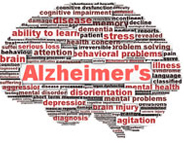 |
 |
|||||||
| February 3, 2014 | Research Extras Attend Healthcare Innovation Symposium IX: Teaching Hospitals and Health Services Research, featuring Steven H. Lipstein, Thursday, Feb. 6. RSVP for the 1st Annual Symposium of the Georgia ImmunoEngineering Consortium on Feb. 28, bringing together faculty, students and fellows from Emory, Georgia Tech, and other partners to discuss the latest research in the field. Read about the dedicated efforts of animal research staff in Emory's Division of Animal Resources and Yerkes National Primate Research Center during the January snow event. Attend the Suddath Symposium, Feb. 20-21 on DNA Repair & Human Disease. Explore the agenda of the India Summit Feb. 17-18, including esteemed faculty from throughout Emory, along with Salman Rushdie, the Indian Ambassador to the U.S., and the Future Group. Read about Georgia Bio's recognition of several Emory bioscientists with its annual Industry Growth Awards. Get information about a new NIH-funded summer program in pediatric bioengineering for undergraduates. Learn how Emory is teaming up with Georgia Tech to launch a new high performance computing cluster for use by Emory researchers. Watch a video with Bernie Marcus describing JScreen, a new tool to screen for inherited diseases in the Jewish-Ashkenazi population. Attend an event presenting core facilities across the Emory campus, March 18, 3-6 p.m. in the School of Medicine lobby.
|
|||||||
Kindergarten Weight Strong Indicator of Childhood Obesity |
||||||||
DDT Exposure is Potential Risk Factor for Alzheimer's Disease |
||||||||
 |
||||||||
Parkinson's Drugs Could Provide New Ways to Treat Vision Problems in Diabetes |
||||||||
Nanoparticles Could Become Powerful Tool to Prevent Cancer |
||||||||
Oxytocin Gene Plays Role in Ability to Remember Faces |
||||||||
 |
 |
|||||||



